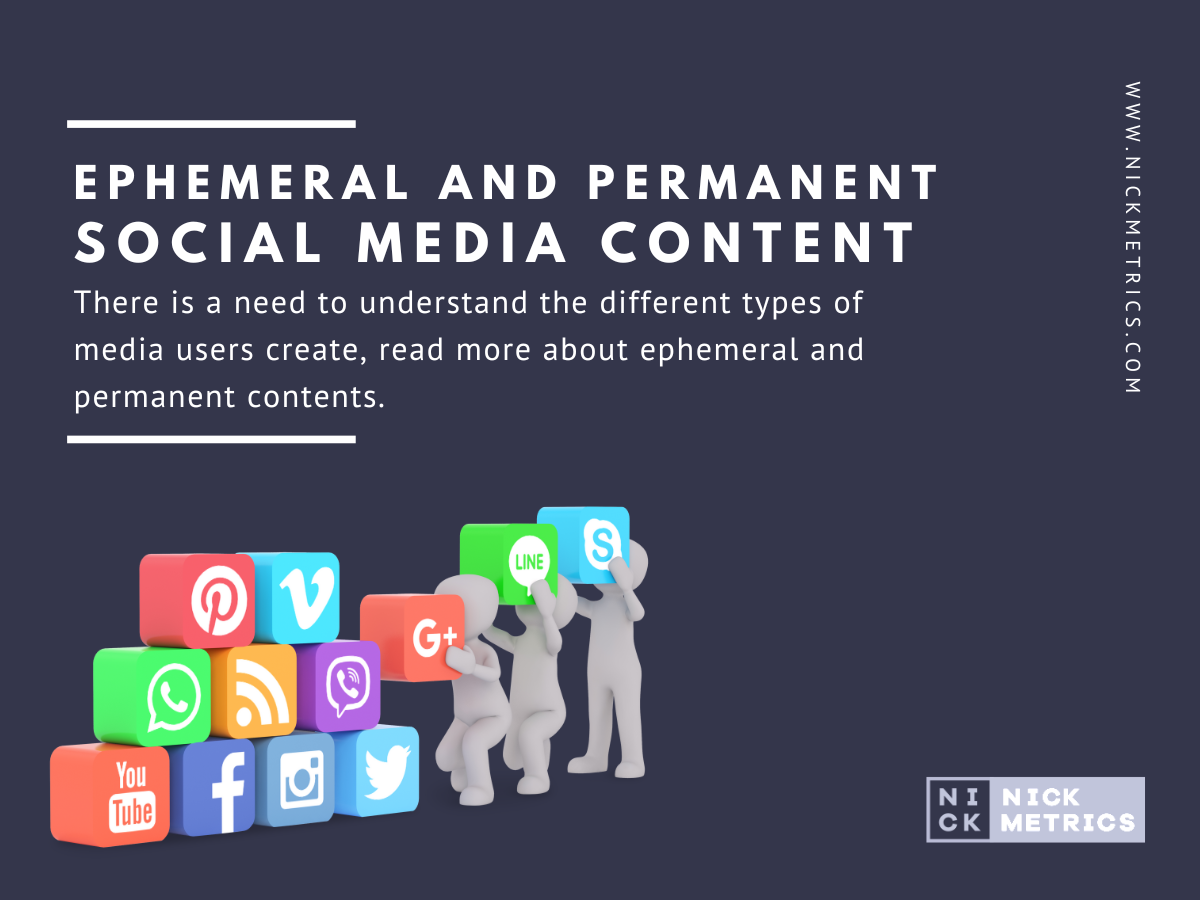
ENTER YOUR EMAIL ADDRESS
Follow Us

There is a need to understand the different types of media users create in a world that places an increasingly significant emphasis on user-generated content. As social media becomes more popular and accessible to larger groups, marketers and brands need to learn how to effectively use these tools to reach their target audiences and convey their messages.
One type of user-generated content shared on social media sites like Facebook is photos and videos, which only exist online for a short period before disappearing into obscurity. These pieces of ephemeral content can be accessed by those who look for them, but once the attention fades, they disappear entirely from search results as if they never existed at all. The result is that the content is gone, and unless users take action to save it, they will lose access to it forever. Producing brief content has its benefits. By making it available for a limited period, the user can create buzz around an event or brand. The fact that the content will be gone in 24 hours makes people who receive the message curious about what they are viewing, leading them to share the piece of media with others and visit the site associated with it.
Contrast this with permanent content, or content available at any time to anyone who looks for it. Facebook pages are an example of a page set by a user which can be accessed at any point in the future, with the only expiration date being when the user deletes their account. Other examples of permanent content include blogs, LinkedIn profiles, and Flickr photostreams. The advantages of having permanence online are also obvious where users have control over their essential information and share with anyone they wish, whenever they want. However, marketers need to consider that permanence may not benefit all scenarios. Spreading news about an event is likely more effective when you have limited time before everything disappears. Hence, people are less likely to be distracted by other content when viewing yours. The fact that you can share important news at any moment means that you can also share it, so being careful about time constraints is essential.
The brief content vs. permanent content debate certainly has its benefits and drawbacks, but what is best for you? That all depends on your company’s needs and the type of image you are trying to project. If there are temporary aspects, it may be advantageous to make a social media page dedicated to this topic which users could access at any point in time only to have the information disappear shortly afterward. However, if you want to show that your brand or product is here for the long term, creating blog posts with relevant content about your niche would be helpful. It can give users valuable insight into how their brand operates while leaving behind valuable permanent records of interactions between users and the brand.
Regardless of which path you choose, the vital thing to remember is that all online content will eventually disappear or become outdated. Creating ephemeral social media content for a limited period can help spread the word about your product quickly and keep users coming back for more because they want to see if it has disappeared yet. In contrast, creating permanent content shows that you have confidence in your business and its ability to provide value to those who use it now and those who will give it a try in the future.
Tags: Ephemeral Content, Permanent Content, Social Media Content, User-Generated Content